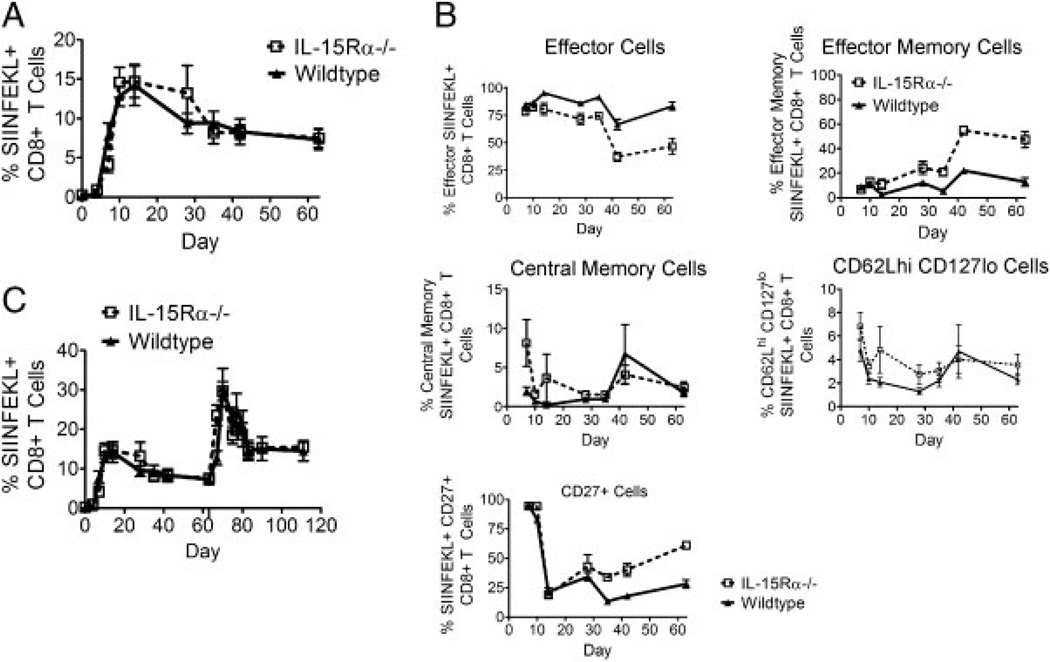Figure 4.
IL-15Rα−/− mice generate WT antigen-specific primary and secondary CD8+ T-cell responses to virally encoded antigens yet more knockout cells have a memory phenotype. (A) WT and IL-15Rα−/− mice were inoculated with rAd-Ova; SIINFEKL-specific CD8+ T cells in the peripheral blood of individual mice were quantitated with an H-2Kb/SIINFEKL tetramer. Data are presented as the percentages of CD8+ T cells that bind tetramer and represent the means of five mice per group ± SE and are representative of two experiments. (B) WT and IL-15Rα−/− mice were inoculated with rAd-Ova and SIINFEKL-specific CD8+ T cells in the peripheral blood of individual mice were divided into effector, effector memory, central memory, and CD62LhiCD127locell subsets. Percentage of CD27+ p18-specific CD8+ T cells in peripheral blood of individual mice was also measured. Data represent the means of five mice per group ± SE and are representative of two experiments. (C) WT and IL-15Rα−/− mice were inoculated with rAd-Ova and then re-inoculated with rAd-Ova nine weeks later and responses were quantitated with an H-2Kb/SIINFEKL tetramer. Data are presented as the percentages of CD8+ T cells that bind tetramer and represent the means of five mice per group ± SE and are representative of two experiments. The Mann–Whitney test was used for statistical comparisons.

